
Home |
About Us |
How to Participate |
Biodiversity Modules |
Projects |
Maps |
News |
Resources

Home |
About Us |
How to Participate |
Biodiversity Modules |
Projects |
Maps |
News |
Resources
|
Definition of "Agriculture" General Code 300: Intensively managed fields. Does not include un-maintained range used as pasture. It does include land set aside for Conservation Reserves. |
Agriculture: Farm (300)
 | |
| Descriptive Habitat Code: Agriculture (3) Farm with irrigated and non-irrigated fields (0) and many crop species (0). | |
| Photo: Tim Knight | |
 Barn Owl Tyto alba Code: TYAL Photo: TFK |
Distribution and Habitat: These owls are local in western Washington, occurring in open areas including farms, non-forested parks, wetlands, and clear-cuts Diet:
Interesting
fact: |
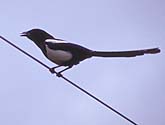 Black-billed magpie Pica pica Code: PIPI Photo: RA |
Distribution and Habitat: It is found in shrub steppe, sparsely wooded, and treeless areas in the Columbia Basin. Diet: Interesting
fact: |
 California gull Larus californius Code: LACAL Photo: RA |
Distribution and Habitat: It is found throughout parts of the western North Pacific Ocean. It breeds on gravel beds along the Columbia River and large lakes in the Columbia Basin. Diet: Interesting fact: |
 Coyote Canis latrans Code: CALAT |
Distribution and Habitat: It is found in mountainous areas, grasslands, deciduous and mixed coniferous forests and even urban areas. Diet: Interesting fact: |
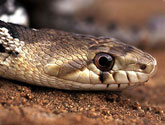 Gopher snake Pitouphis melanoleucas catenifer Code: PIME Photo: Chris Brown |
Distribution and Habitat: It is found in mountainous and rocky areas up to an altitude of at least 8000 feet. Diet: Interesting
fact: |
 Great horned owl Bubo virginianus Code: BUVI Photo: TFK |
Distribution and Habitat: It is found across the state in cliff areas. Diet: Interesting
fact: |
 Honey Bee Apis mellifera Photo: TFK |
Distribution and Habitat: Honey bees are not native to the Americas but were introduced by European settlers. It is found across the state in fields and gardens. Diet:
Interesting
fact: |
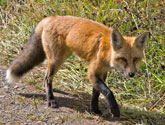 Red Fox Vulpes vulpes Code: VUVU Photo: Natures Pics |
Distribution and Habitat: In Washington, the Red Fox is indigenous in forests of the central and east Cascades and has been introduced in other parts of the state. Diet: Interesting
fact: |
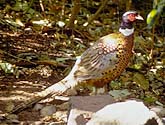 Ring-necked pheasant Phasianus colchicus Code: PHCO Photo: KMD |
Distribution and Habitat: It is found in grasslands, agricultural areas and woodlands. Diet: Interesting fact: |
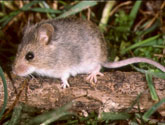 Western Harvest Mouse Reithrodontomys megalotis Code: MEME Photo: Bob Gress |
Distribution and Habitat: Western harvest mice range from southern Mexico through the western half of the United States. They are found in prairies and uncultivated croplands. The Western Harvest Mouse prefers dense vegetation (grass, weeds), usually near water. Typical habitats are marshes, meadows, boundaries of irrigated fields, brushy borders of streams and lakes, shrubby borders of wheat fields, and fence rows. Diet: Interesting
fact: |
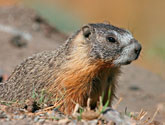 Yellow-bellied marmot Marmota flaviventris Code: MAFL Photo: Natures Pics |
Distribution and Habitat: It is found throughout parts of eastern Washington in semi-arid habitats. Diet: Interesting
fact: |
Home |
About Us |
How to Participate |
Biodiversity Modules |
Projects |
Maps |
News |
Resources